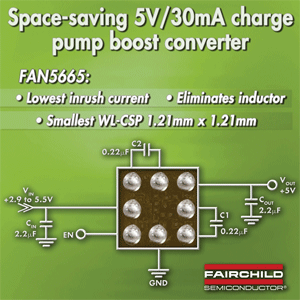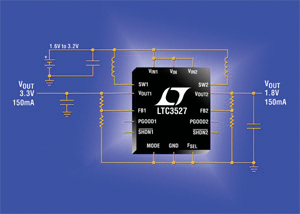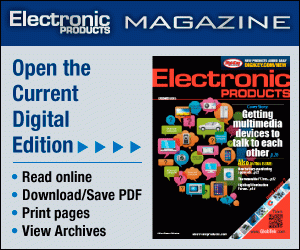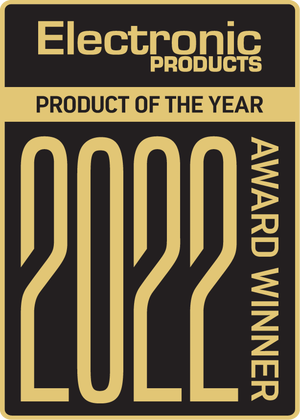The premier but hip APEC power show serves details, trends
The Applied Power Electronics Conference and Exposition (APEC) has become the premier event in applied power electronics in its 20+ years of existence. As its name implies, it focuses on the practical and applied aspects of the power electronics business. Equating APEC to host city Austin, General Chair Steve Pekarek says the 23rd annual IEEE Applied Power Electronics Conference and Exposition will be hip and trendy. That’s on target because it covers the hot topics in power electronics including standards, trends in server power, hybrid vehicles, IP, and power for portables. APEC has something of interest for anyone involved in power electronics including equipment OEMs, designers, manufacturers, and test engineers. You can get educated in any of the 18 professional seminar sessions, check out the six education tracks, listen in on the special sessions, or get involved with the popular rap sessions.
The Exposition has grown from about 30 exhibitors in 36 booths in 1991 to more than 120 exhibitors filling180 booths today. The Hilton Austin is the official hotel and is situated within easy walking distance to the Austin Convention Center and the live music venues of sixth street and the Capitol building, and if it’s not an easy walk you can always take one of the free Dillos to get you around the downtown area.
Here are a few products that you will want to know more about:
olpo01_feb2008 National Semiconductor’s LM201xx and LM202xx buck switching regulators
National Semiconductor (www.national.com) introduced the LM201xx and LM202xx lines of buck switching regulators that feature high-power density and self-synchronization. These 10 synchronous buck regulators provide high-efficiency dc/dc power conversion for point-of-load power supply designs in applications such as communication, data storage, industrial and automotive.olpo03_feb2008
Micrel’s dual 400-mA 4-MHz PWM synchronous buck step-down converter
Micrel (www.micrel.com) offers the MIC23250 dual 400-mA 4-MHz PWM synchronous buck step-down converter housed in a 2 x 2-mm 10-lead package. This device is well suited for portable applications including mobile handsets, GPS, PDAs, portable media players that require high efficiency, low output ripple, and small size. The package integrates two synchronous rectified dc/dc converters that eliminate the need for external MOSFETs.
The SixPac series of inverter power stages from Applied Power Systems (www.appliedps.com) targets power and frequency conversion, motor drives and similar applications, Reducing power losses by up to 30% and increasing output capacity by 20%, it is field repairable and provides current ratings from 50 to over 2,500 A. The standard SixPac is equipped with IGBTs, heat sink, low inductance laminated bus, dc-link capacitors, current sensors, gate drivers with dead time generator and a complement of fault protection features.
The Genesys family of programmable power supplies from Lambda (www.lambdapower.com) is available in 750 W, 1.5 kW, 3.3 kW, 10 kW and 15 kW with output voltages from 7.5 to 600 V, and current up to 1,000 A. Its front panel provides control through encoders selectable for fine or course adjustment and four digit LED voltage and current meters. The Genesys 10/15-kW supply enables up to four like units to be connected in parallel so the group can appear as a single 60 kW power supply.
A family of panel potentiometers from BI Technologies (www.bitechnologies.com) is offered in a wide range of sizes and configurations, and is well suited for music industry applications such as amplifiers, electronic mixing boards and electric guitars. The panel potentiometers are available with resistance ranges from 100 W to 1 MW and standard tolerance to ±20%.
The TPS61165 from Texas Instruments (www.ti.com), is a high-brightness LED driver with an integrated 40-V, 1.2-A switch that can drive up to three 1-W LEDs in series. It features an input voltage range of 3-V to 18-V to help manage multiple high-power LEDs used in single-cell, battery-powered applications or point-of-load designs with a 9- or 12-V bus.
The Bias Power (www.biaspower.com) BPS-2 Series micro-size switching power supplies occupies less than a cubic inch of space and provides a single or dual output, and 85 to 265 Vac input. The patented design eliminates line EMI and needs no input filtering. The supply suits a variety of low-power and standby mode applications in appliances, consumer electronics, and control devices, providing power to system clocks, processors, IR remote receivers, membrane keypads and LED panel lighting.

Fairchild Semiconductor’s FAN7316/7317 CCFL backlight inverter drive ICs
Fairchild Semiconductor’s (www.fairchildsemi.com) FAN7316/7317 are highly integrated CCFL backlight inverter drive ICs for N-N half-bridge, push-pull, and P-N full-bridge LCD backlight inverter designs. featuring a wide input voltage range, and built-in open lamp protection (OLP) and open lamp regulation (OLR*) circuit, The ICs eliminate up to 30 external components in four-lamp-circuit inverter designs compared to similar devices now available.
Murata Power Solutions (www. murata-ps.com; formerly C&D Power Electronic division) has introduced a series of transformers that simplify implementation of isolated RS-485 and RS-422 interfaces. Each device in the model 782485 converter transformer series has been specifically designed for use with the Analog Devices ADM2485 high speed, isolated differential bus RS-485 transceiver.
Microsemi (www.microsemi.com) offers the LXMG161xA and LXMG181x series of backlight inverters for powering displays that use a single cold cathode fluorescent lamp. They are designed to drive CCFL backlight units in 4 to 12-in. TFT LCD displays driven by single lamps. Applications include medical and industrial markets where multiple panels are continuously selected for new projects.

Alpha & Omega Semiconductor’s EZBuck technology
EZBuck technology from Alpha & Omega Semiconductor (www.aosmd.com) enables low MOSFET on-resistance for high efficiency. The family of synchronous EZBuck dc/dc step-down converters are designed for conversions from 4.5- to 16-V input voltages. They are ideal for networking, computing, consumer and industrial markets for powering low voltage rails in cable and DSL modems, set-top boxes, portable devices, LCD TVs, industrial control systems, servers, and computers.
International Rectifier (www.irf.com) introduces the iP1206, a building block for synchronous buck applications including telecom and networking equipment. It is designed for two-phase single output applications up to 30 A or dual independent outputs up to 15 A. The device is composed of a power stage and PWM control IC.
The ISL6719 100-V linear regulator from Intersil (www.intersil.com) handles the functions of up to 15 discrete components. It is available in a 3 x 3 mm DFN package. The device is suitable for use as a single start up linear regulator in isolated power designs, or as an output bias supply for point-of-load regulators in telecom and datacom applications.
Vishay Intertechnology (www.vishay.com) offers the SiP21301 LDO controller with adjustable and fixed output voltage options that uses external n-channel MOSFETs to provide low drop-out voltages of

Linear Technology’s LTC3527/-1 dual-output 2.2-MHz current-mode synchronous boost dc/dc converters
The LTC3527/-1 dual-output 2.2-MHz current-mode synchronous boost dc/dc converters from Linear Technology (www.linear.com), have an integrated output disconnect. Their internal 800- and 400-mA switches deliver output voltages to 5.25 V from an input voltage of 0.70 V (0.5 V when running) to 5 V. They are well suited for Li-ion/polymer or single and multicell alkaline/NiMH applications. The converters deliver up to 200 mA and 100 mA of continuous output current (at 3.3 V) from a single alkaline cell or 400 mA and 200 mA from dual cells. Synchronous rectification enables efficiencies of up to 94% while burst-mode operation lowers quiescent current to 12 µA, providing extended battery run-time in handheld applications.
Paul O’Shea
APEC runs from February 24 to 28. Exhibit hours in the Austin Convention Center start on Monday from 5:30 to 8:30 p.m., Tuesday noon to 5 p.m., and Wednesday 10:15 a.m. to 2 p.m. For more information, visit http://www.apec-conf.org.
Advertisement
Learn more about Electronic Products Magazine





